Fact-checking Rimas Bružas’ column on LRT: 2% real vs 50% claimed
Last week, many Belarusians living in Lithuania were disturbed by the column written by journalist Rimas Bružas. Among other things, the author intended to show that Belarusian migrants who ‘bring along a stinking snake of disrespect towards our [Lithuanian] way of life’ are not welcome in the country.
The text only presented a few facts, but one figure was easily verifiable. Journalist Siarhei Tsverdzichau questions certain claims from the high-profile story through a research.
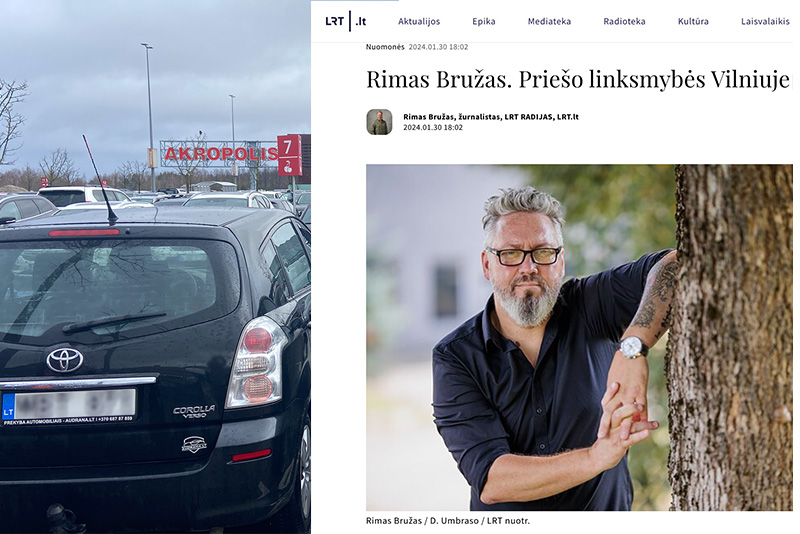
Is Rimas Bružas getting a little too worked up?
Fact journalism and commentary journalism share a common trait – they are both based on facts. Should be. If an author cites an opinion, no matter how controversial it may be to someone, they are entitled to do so. But facts need to be checked, otherwise the arguments sound frivolous.
Regarding the significant number of Belarusians in Vilnius, Rimas Bružas notes that while stuck in traffic, ‘one might feel as though they were in Minsk due to the nearly equal number of cars with Belarusian and Lithuanian license plates’.
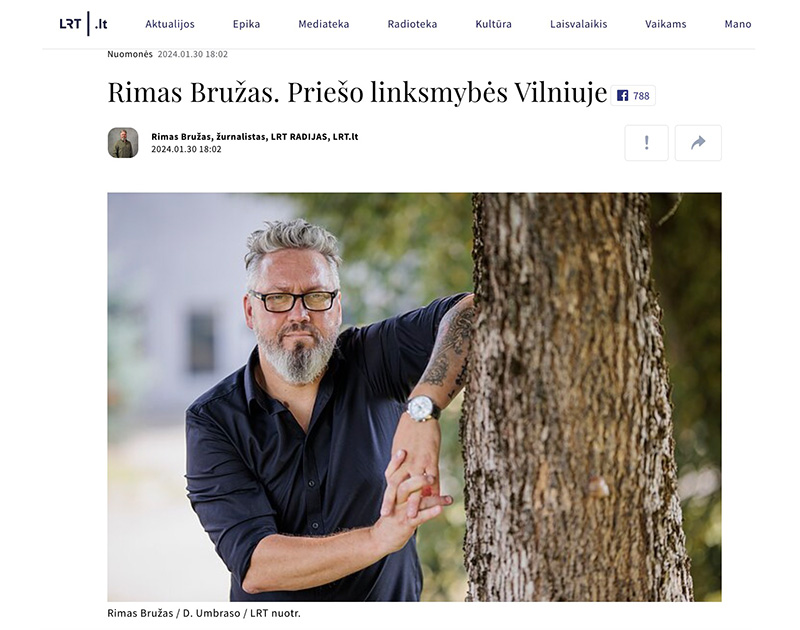
For those permanently residing in Lithuania, it sounded dubious, to say the least. Cars with Belarusian license plates are now quite rare on the streets of Vilnius and Kaunas. In the last year or two, there have been significantly fewer of them, especially after many relocants registered their cars with local authorities as required by law.
The article implies that the author is advocating for action, which is what upset the Belarusians. He rhetorically asks if readers have witnessed Lithuanians organizing ‘anti-Belarusian flash mobs’ near the Akropolis shopping center, or if they have seen posters portraying Lukashenka and Putin in ‘obscene poses,’ or if they have come across leaflets placed behind their windshield wipers.
The BAJ author conducted a fact check after the columnist mentioned a shopping center popular among Belarusians. The goal was to verify if there were indeed as many cars from Belarus as stated in the article.
After carefully studying the text, it is clear that the number of our compatriots in Lithuania is concerning to the journalist. It is worth investigating whether Rimas Bružas is exaggerating. Especially since it is very easy to verify this fact.
What about the share of Belarus cars?
The study was conducted on Sunday from 12:00 to 1:00 pm to observe the peak number of Belarusians near Akropolis. The parking lot in front of the shopping center was almost full, with the majority of cars having Lithuanian license plates.

Do you need evidence? Here it is: The author of BAJ counted the number of cars with non-Lithuanian license plates and took relevant photos in the parking lot with a capacity of over 1300 vehicles.
The results showed that 24 cars with Belarusian license plates were parked in front of the shopping center. Including a BMW with diplomatic license plates, i.e. its owner can be considered a Belarusian only very loosely, but we have included this car in the Belarusian statistics.
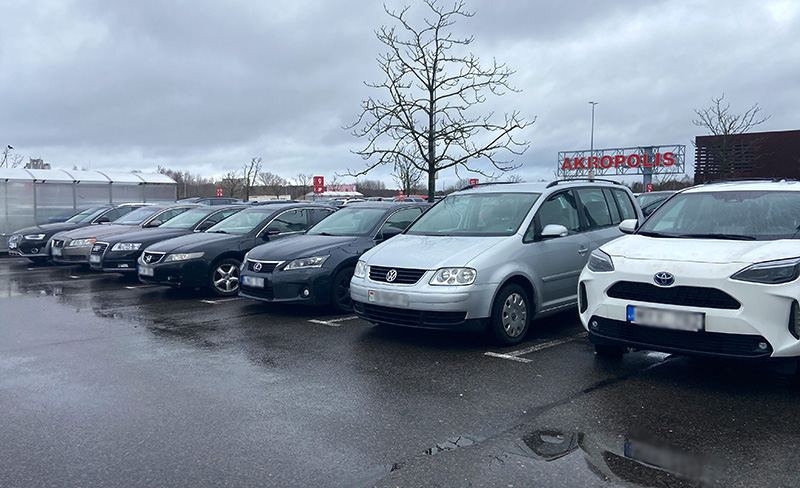
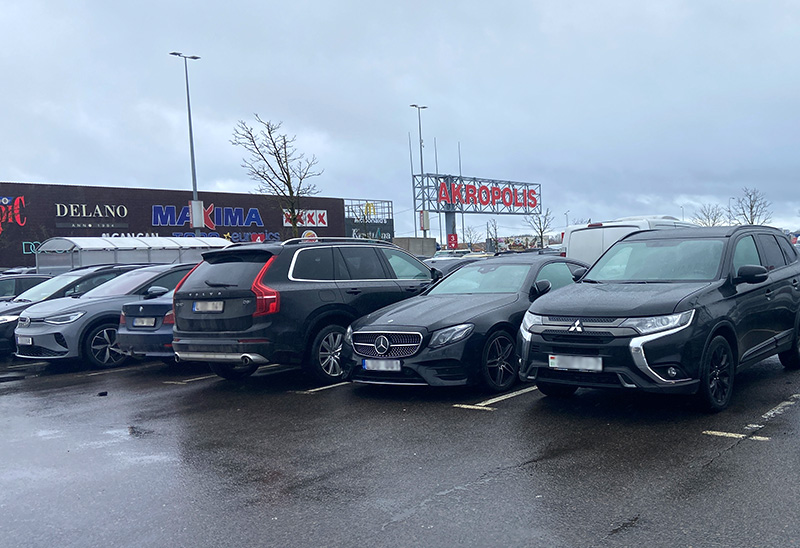
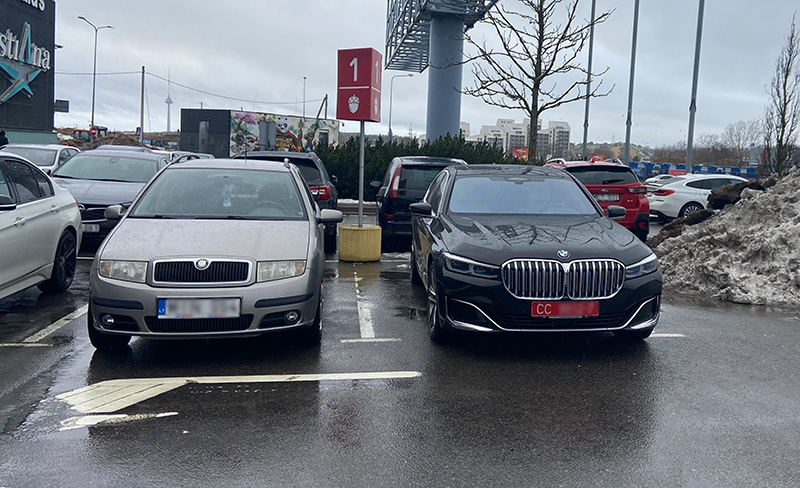
Do some simple math. You’ll get the following. Let’s assume the parking lot is 90% full – that’s 1,170 cars. What is the share of Belarusian cars? Recall, that there are 24 of them. Two percent! This is a far cry from the 50% that Rimas Bružas writes about.
The fact that Belarusians are more common among foreigners in Vilnius is what the author of the article on the LRT website is right about. At that time, the parking lot had 7 cars with Ukrainian license plates, 3 with Latvian license plates, 3 with Polish license plates, 2 with Estonian license plates, 1 with Finnish license plates, and 1 with German license plates. The vehicles changed frequently, but their proportions remained consistent. Enough to get an idea.

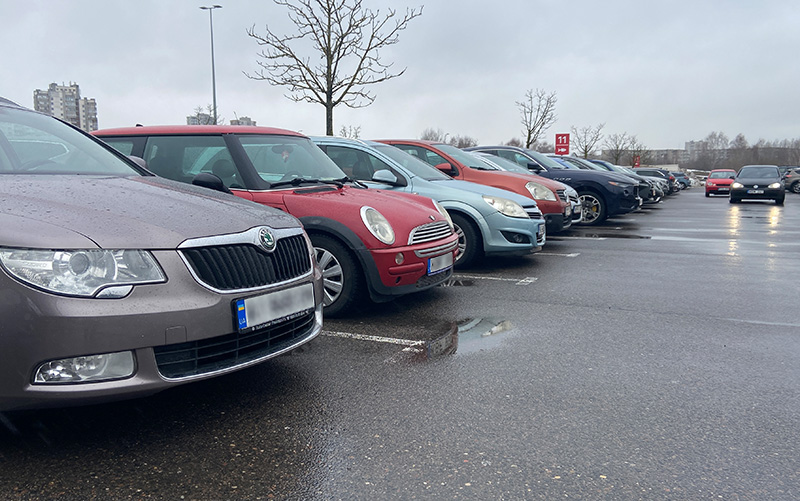
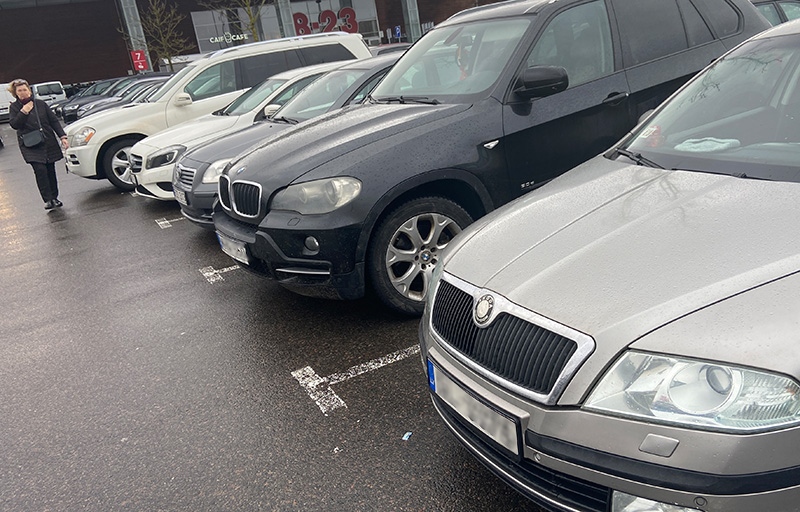
It is difficult to imagine that such a number of Belarusians who traveled to Vilnius could pose a threat to anyone! In my opinion, the expression used (‘there are almost as many cars with Belarusian license plates as with Lithuanian ones’) is unsuccessful and speculative, even if it is intended as an artistic device.
So how many Belarusians are there in Lithuania?
Other facts testify that there are not so many ‘visitants from Belarus.’ In particular, statistics on Schengen and national visas issued by the countries of the relevant agreement. Belarusians used to be record-breakers in obtaining Schengen visas, but in recent years they have become almost outsiders. It is increasingly difficult to obtain a permit for citizens of the Republic of Belarus to visit the European Union.
While it has always been quite a quest, now it’s an expensive procedure with a significant risk of failure. According to Aliaksandr Liber, a visa analyst who spoke with Zerkalo, the cost of an EU visa for Belarusians ranges from Br390 to Br2,000 (€110 to €570), and the decision can take up to a year. So the entrance ticket is too expensive, and to get to Vilnius, a Belarusian must have great motivation.
Belarusians now find it easier to travel to Russia, but many still choose Lithuania because they feel more aligned with European values. This is not just about shopping and restaurants.
Additionally, following the publication on LRT, there were discussions among journalists that the official data regarding the number of Belarusians in Lithuania may have been exaggerated. Under the new requirements, truck drivers are now required to obtain residence permits instead of visas. This means that they are considered residents, even though most of them live in their truck cabs or Belarus. According to the Lithuanian Freight Forwarders Union, there are approximately 40,000 workers in this category.
If this is true, then the Belarusian diaspora in Lithuania may not be as large as officially claimed. According to the latest published data, approximately 60,000 Belarusians reside in Lithuania. However, if we exclude professional drivers, the number may be closer to 20,000.
No need to look for enemies among friends!
But back to Akropolis. The example of Frederikas Jansonas demonstrates how the position of the same person can vary depending on the situation. As noted by Pozirk, in a 2024 interview with Žinių Radijas, the advisor to the Lithuanian president stated that Belarusians could potentially become the fifth column. He believes that the parliament made a mistake by refusing to level the playing field for Belarusians and Russians.
«The Department of State Security signals that the problem is that thousands and thousands of Belarusians come to Lithuania every month. And we’ve created a potentially big problem,» the official emphasized.
In the past, Frederikas Jansonas served as Akropolis’ media relations representative and made conflicting statements. For example, in an interview with the Belarusian state TV channel ONT in 2015, he spoke in Russian:
“They come because there is a wide variety of goods, quality merchandise, and an opportunity to save money. Whereas 5–7 years ago they went shopping, now they come for leisure. They ice skate, they bowl.”
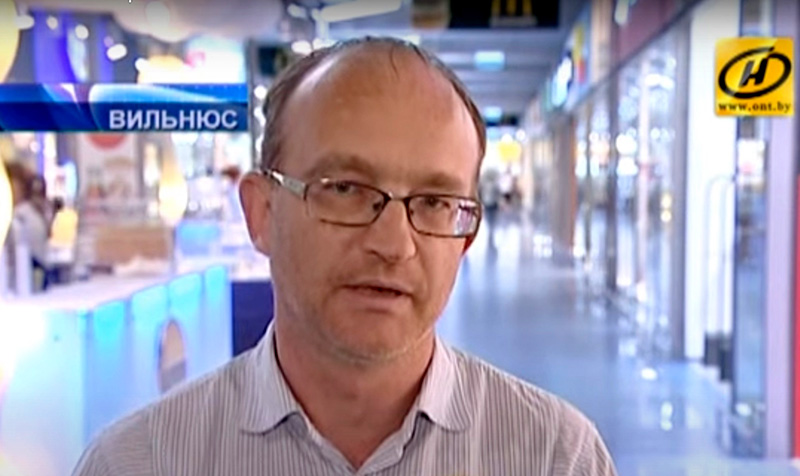
Individual Lithuanian officials are not the only ones who have changed their rhetoric. After 2020, many people approved the position of Belarusians, but with the outbreak of war in Ukraine the attitude changed dramatically. Many people now claim that we are representatives of an aggressor country.
However, most of the Belarusian diaspora in Lithuania are against Lukashenka’s regime and strongly oppose Russia’s actions. This was evident from the large number of white-red-white flags at the march in support of Ukraine in Vilnius on February 24, 2022.
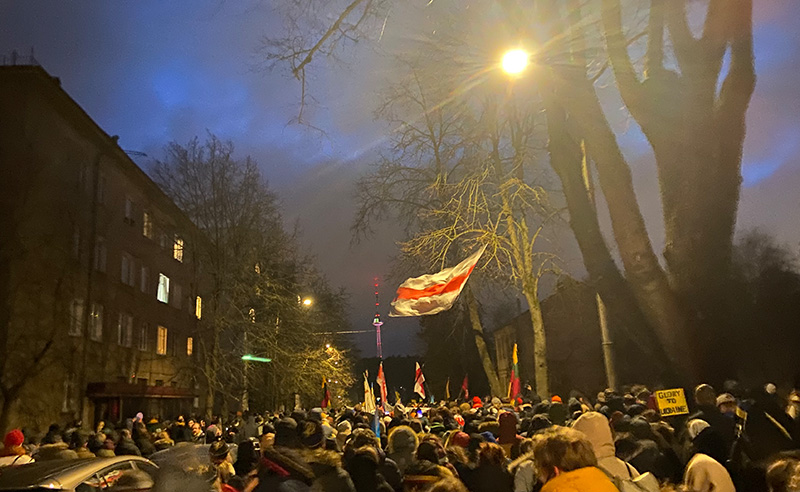
In short, anti-Belarusian attacks target democratic movement representatives. Lukashenka and Putin are effectively using it in propaganda to their advantage. For instance, the newspaper SB. Belarus Segodnya used artificial intelligence to publish a series of mocking images. The images allegedly featured Gitanas Nausėda and a representative of the Belarusian diaspora. The newspaper accompanied the images with the following comment:
« ‘Freedom fighters’ who rushed to Lithuania were warned that they would only be needed there as long as the idea of a coup d’état in Belarus was still on the agenda of the West. Not only did they not believe, but they also became so out of line that they began to consider themselves as historical masters of the Lithuanian lands.»
Rimas Bružas’ Facebook post attracted a typical response. The commentators include supporters of so-called ‘Litsvinism’ and ‘Russian world’. Unfortunately, some comments contained threats against the author. In short, a rich collection of parrot cries from the Kremlin bots has been assembled.

Such conversations and misunderstandings can lead to negative outcomes. Only authoritarian regimes benefit from worsening relations and sharing a common history. To defend freedom, we must stay united rather than seek out enemies among friends during this challenging time for democracies worldwide.
The author’s opinion may differ from that of the editorial board.
Чытайце яшчэ:
Літоўскі журналіст абурыўся беларусамі ў Вільні, заклікаў «паказаць, што ім не радыя»
Шлях да Беларусі ляжыць праз перамогу ва Украіне? Дыскусія пра тое, як утрымаць наш інфармацыйны парадак у свеце
Публікацыя фільма пра пратэсты выклікала гучны рэзананс. Прычына — у бяспецы. Што кажуць аўтар і медыя?
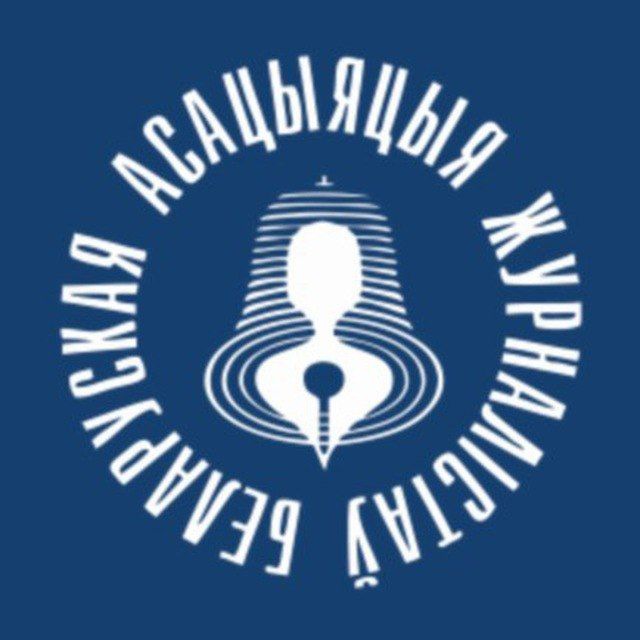 @bajmedia
@bajmedia
